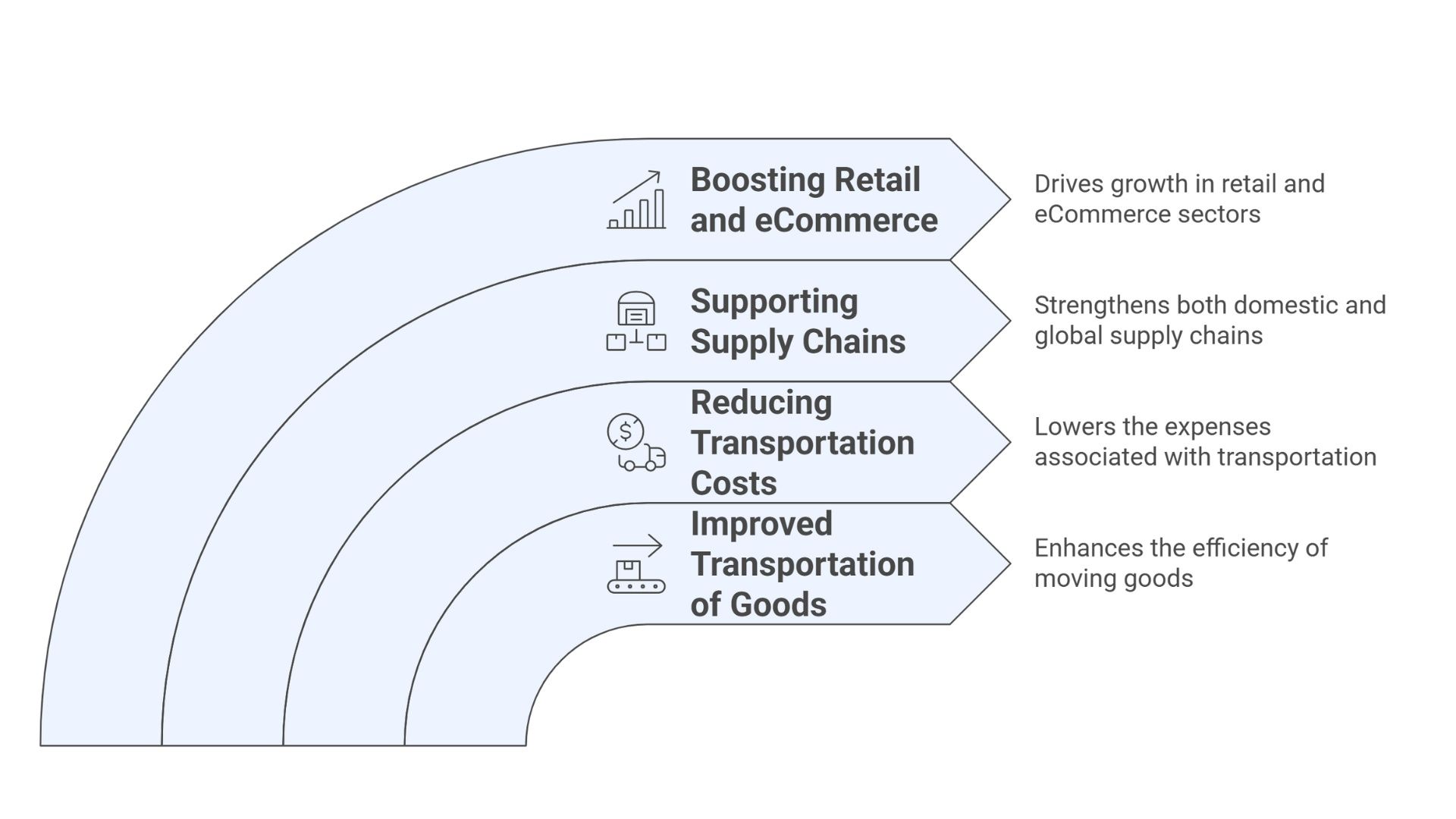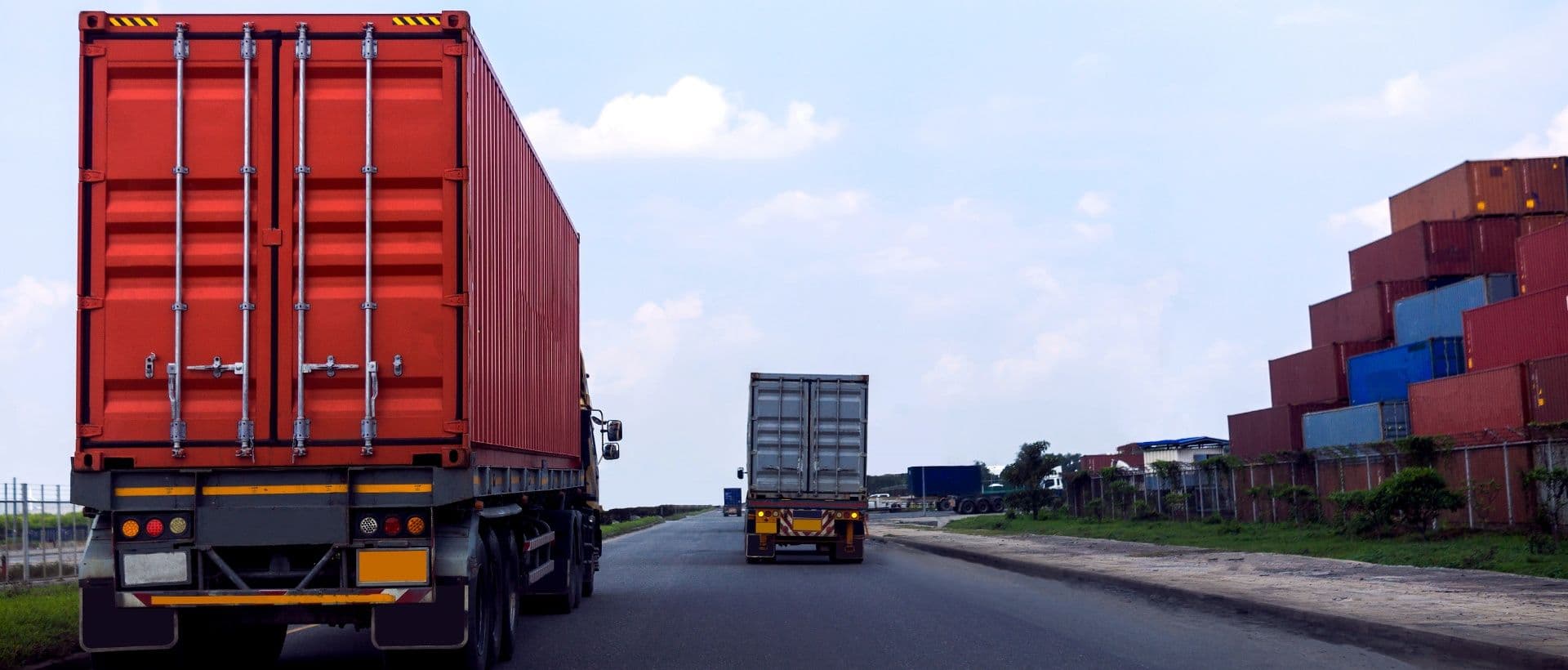
World trade is growing at a rate previously unimaginable. Statistics supplied by the World Trade Organisation show that world merchandise value in goods exported was a whopping US$24 trillion for the year 2023. Contrarily, online purchases made up over 20% of retail trade around the globe.
Effectively, this information describes an elaborate transfer of movement, storage, and distribution that becomes the vehicle for trade to take place. At the center of the system is the logistics hub. A logistics hub is a focal point where products are received, processed, and dispatched to various destinations.
These hubs do have tasks that go beyond merely moving shipments. They are the pillars of supply chain efficiencies; hubs enhance on timelines and shipping costs, and assist companies in serving customers within regions and across borders. Hubs would not be possible in contemporary trade if it were not for them.
What is a Logistics Hub?
A logistics hub is an intermodal node linking transport modes, warehouses, and distribution networks. It is the supply chain and trade nerve center.
The question of what is a logistics hub elicits an answer more than a warehouse. In comparison with a warehouse, where all it does is store products, or a distribution center where it mainly deals with addressing order fulfillment, a logistics hub brings together transport, handling, storage, and added-value activities within a building.
A logistics hub is a location that consolidates, stores, sorts, and transports goods. This allows transport companies to consolidate their activities, streamline delivery times, and manage costs. To a company that deals with the domestic and export market, the position of a logistics hub is the difference between timely delivery and an expensive delay.
Logistic Hubs and International Trade: Relevance

Improved Transportation of Goods
Different transport modes, such as roads, airports, seaports, and railroads, are all linked through a logistics hub. The connection accelerates cross-border movement and reduces transit time. Reduced transit time improves competitiveness and customer satisfaction. It is crucial to sustain a high-quality product in certain industries, such as fresh fruits and vegetables or drugs.
Reducing the Cost of Transportation
Businesses can consolidate LCL shipments, reap economies of scale, and limit the frequency of unnecessary backhauls by utilizing centralized hubs.
Supporting Domestic and Global Supply Chains
Whether it is transporting fresh fruits and vegetables across a state or exporting electronics globally, logistics hubs are essential. They form a network that gets raw materials to factories and finished products to consumers within the appropriate time. An example of this is a car factory using hubs to export finished vehicles across the globe and import parts from different sources.
Boosting the Development of Retail and eCommerce
The popularity of online shopping has led to demands for speed and delivery reliability. Online retail behemoths Amazon and Flipkart require strategically placed logistics hubs to offer faster or same-day delivery. Without them, it is impossible to meet the demands of modern retailing. If you can connect them to well-established hub networks, you can help small businesses reach a wider audience.
Different Types of Logistics Hubs
Based on Function
- Transport Hub: Focuses on shipping goods by rail, air, sea, or road.
- Distribution Hub: Oversees product selection, sorting, packaging, and delivery to the intended location.
- Consolidation Hub: It collects small shipments and consolidates them into larger freight for cost-cutting purposes.
- Deconsolidation Hub: Breaks large shipments into small packages for market distribution.
- Trans-shipment Hub: Coordinates the transfer of cargo among carriers or ships, eliminating the need for extensive storage space.
Based on Geography
- Regional Hubs: Typically located near areas of production, these hubs cater to a local or state market.
- National Hubs: Are the nodal points that connect different parts of a country.
- Global cities Hubs: These are found in cities like Rotterdam, Singapore, or Dubai, and act like gateways for global trade while connecting continents.
Factors That Make a Strong Logistics Hub

Strategic Location & Connectivity
Being close to ports, airports, and highways is crucial. A logistics hub needs to be well-connected to both suppliers and final markets. Those areas that are near several transport modalities have a distinct advantage.
Infrastructure Quality
High-tech warehousing, cold storage, and computerized handling equipment optimize efficiency and reliability. Investments in infrastructure enable hubs to process more volumes and types of goods.
Technology Adoption
Real-time tracking, digital platforms, robotics, and AI-based forecasting enable hubs to be smarter and quicker. Predictive analytics enables firms to steer clear of bottlenecks and optimize inventory management.
Skilled Workforce & Policy Support
Trained personnel, along with governmental assistance in the form of tax breaks and trade policies, enhance the efficiency of logistics hubs. A hub that allows coordination among private firms and public institutions tends to perform better.
Sustainability & Green Logistics
Current hubs increasingly employ green energy, electric transport, and sustainable packaging. These reduce the release of carbon and enhance conformity with international standards. Businesses are also being pushed by clients and regulators to green their supply chains.
How to Choose the Right Logistics Hub for Your Business?
Identify Your Supply Chain Needs
Companies need to determine if they need domestic access, global access, or both. A B2B factory, for instance, might prefer a location close to industrial clusters, while a D2C company might want proximity to metropolises. Proper planning guarantees improved results.
Assess Costs and Scalability
Choosing a hub must weigh short-term cost reduction against long-term growth potential. The best hub enables businesses to grow operations without massive relocation costs. Businesses must also consider hidden expenses, such as customs clearance and storage fees.
Consider Technology Integration
Opt for hubs that offer digital services in the form of automated inventory management, route optimization, and visibility platforms. Technology integration can also minimize manual errors and enhance customer experience.
Risk & Compliance Factors
Trade compliance, customs clearance assistance, and political stability of the hub location are essential parameters that have an impact on smooth functioning. For international companies, it is essential to have partnerships with hubs that enjoy good relations with customs officials.
Future of Logistics Hubs
The logistics sector is shifting towards more digitization and sustainability. Intelligent hubs supported by Internet of Things (IoT), blockchain, and AI will reign supreme in the next decade. These technologies will assist in handling data flows, enhancing transparency, and maintaining a no-fraud status.
The pressure toward green logistics will also shape the way hubs are run, with a focus on electric fleet operations, the use of renewable energy, and minimizing packaging waste. New hubs in Asian and African emerging markets are also likely to create new centers that will compete with traditional European and North American hubs.
Summing Up
Logistics hubs are not merely geographical locations. They are the lifeblood of international trade and contemporary supply chains. From reducing costs and accelerating deliveries to facilitating eCommerce expansion, logistics hubs define how products travel around the globe. As commerce and technology evolve, logistics hubs will continue to redefine efficiency, sustainability, and customer satisfaction in global supply chains.


